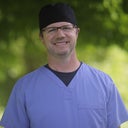Hi, I don't know if that particular version of facelift does indeed properly address the SMAS layer as described below. I have performed many facelifts over the past 30 years many of which are the minimally, invasive SMAS type facelifts. If you have "jowls” these represent sagging facial tissues and an indication for some form of a SMAS facelift. The underlying SMAS layer, of the face, must be dissected, lifted, trimmed and re-sutured (not merely folded or suspended with threads or sutures that will not last). The excess skin is then removed and the facelift incisions closed.





